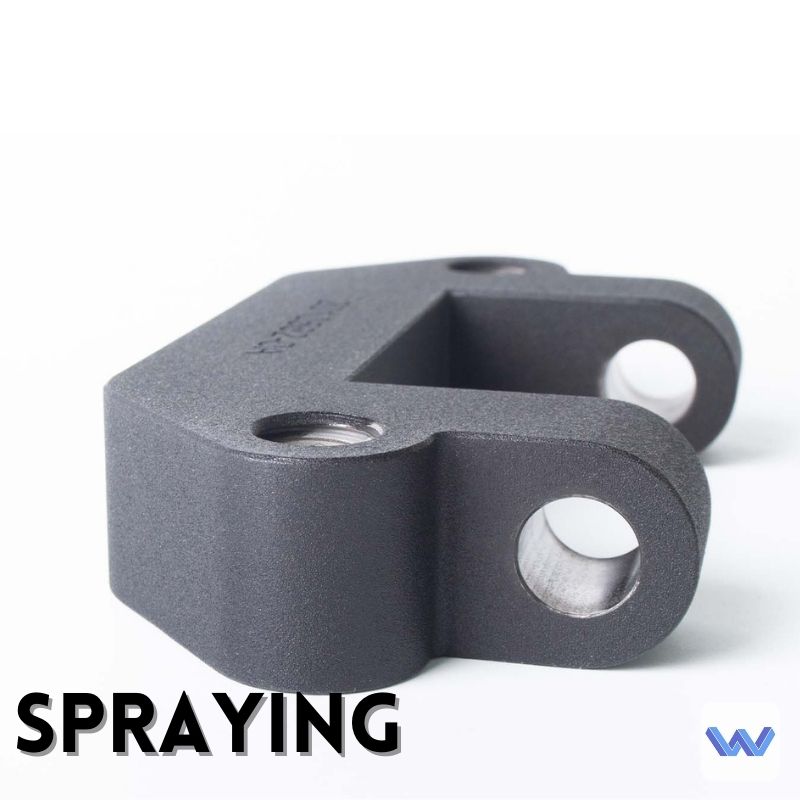Spraying is a process used in manufacturing and custom CNC machining service to apply a coating or finish to a surface. This technique involves using a spray gun or nozzle to atomize a liquid or powder material into small droplets or particles, which are then sprayed onto the surface.
Spraying is used for a wide range of applications, including applying paints, coatings, and protective finishes to surfaces, as well as depositing materials for additive manufacturing and 3D printing.
There are several different types of spraying techniques, including air spraying, airless spraying, electrostatic spraying, and high-volume low-pressure (HVLP) spraying. Each technique has its own advantages and disadvantages, and the choice of technique will depend on factors such as the type of material being sprayed, the desired finish, and the size and shape of the surface being coated.
Surface preparation is an important aspect of the spraying process, as any contaminants or imperfections on the surface can affect the quality of the finish. Surface preparation may involve cleaning, sanding, or using a primer or base coat to prepare the surface for the final coating.
Overall, spraying is a versatile and effective method for achieving a high-quality finish on a variety of surfaces, and it is a key part of the manufacturing and CNC machining process.


